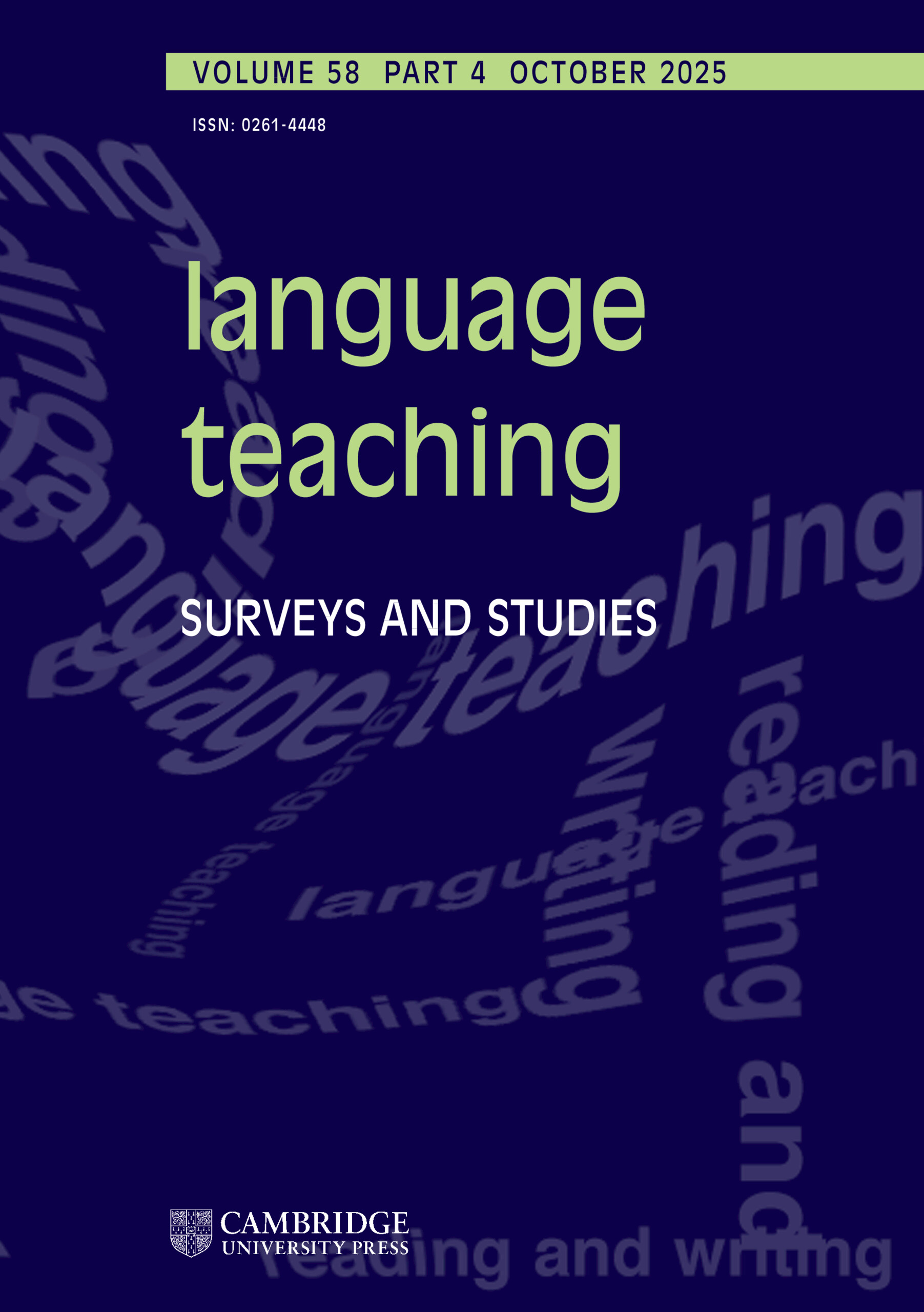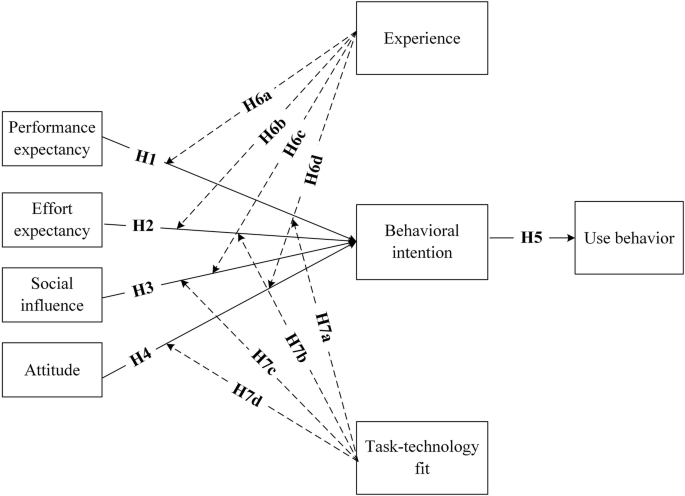Parents’ views on Chinese young learners’ foreign language learning attitudes and motivation: A mixed methods study | Language Teaching

2.1 Theoretical approaches to FL attitudes and motivation
Attitudes and motivation, along with language aptitude, are believed to be three of the most important predictors of language success (Gardner, Reference Gardner1985). The ABC model emphasises that attitudes are a complex integration of feelings, behaviours and cognitions (McLeod, Reference McLeod2023). Applying this model to FL learning, attitudes encompass learners’ positive or negative feelings associated with the language, the actions or predispositions they adopt on FL learning, and the beliefs, values and perceptions they attach to the target language. Gardner’s socio-educational model classified attitudes into three distinct yet interconnected types: attitudes towards the learning situation (response to the immediate environment; e.g. teachers and courses), attitudes towards the target language community (e.g. the degree of affection towards the target language, country and people), and attitudes towards learning the target language (e.g. subjective evaluations about learning the target language) (Dörnyei & Ushioda, Reference Dörnyei and Ushioda2011; Gardner, Reference Gardner1985, Reference Gardner2010, Reference Gardner, Lamb, Csizér, Henry and Ryan2019).
Motivation is conceptualised in a variety of ways under different theoretical frameworks, such as the socio-educational model (Gardner, Reference Gardner1985, Reference Gardner2010, Reference Gardner, Lamb, Csizér, Henry and Ryan2019) and the self-determination theory (Noels, Reference Noels, Dörnyei and Ushioda2009; Noels et al., Reference Noels, Clément and Pelletier1999, Reference Noels, Pelletier, Clément and Vallerand2000). The socio-educational model takes a macro perspective to examine multifarious sociocultural dimensions, including language communities, language globalisation and multiculturalism (Ushioda, Reference Ushioda, Lamb, Csizér, Henry and Ryan2019), and it remains the theoretical cornerstone of second language (L2) motivation research. The self-determination theory posits that learners’ motivation develops through the trajectory of amotivation, extrinsic motivation and intrinsic motivation (Noels, Reference Noels, Dörnyei and Ushioda2009; Noels et al., Reference Noels, Pelletier, Clément and Vallerand2000). Extrinsic motivation drives people to learn through external rewards (e.g. good grades and praise from others), while intrinsic motivation concerns the inherent joy and satisfaction that comes from the learning process itself (e.g. through positive classroom experiences, engaging tasks and activities, captivating materials and positive connections with teachers) (Nikolov, Reference Nikolov2002; Noels, Reference Noels, Dörnyei and Ushioda2009). Other theories offering insights into motivation include the person-in-context relational theory (Ushioda, Reference Ushioda, Dörnyei and Ushioda2009), the L2 Motivational Self System (Dörnyei, Reference Dörnyei, Ushioda and Dörnyei2009) and the complex dynamic systems (Ushioda, Reference Ushioda, Lamb, Csizér, Henry and Ryan2019). At its core, motivation is considered a changeable behavioural and psychological phenomenon influenced by a variety of factors (Dörnyei & Ushioda, Reference Dörnyei and Ushioda2011). This study is mainly informed by the socio-educational model as it is particularly relevant to our need of addressing the complex nature of motivation by synthesising contextual factors and learners’ individual differences.
2.2 Contextual and individual factors influencing FL attitudes and motivation
In recent decades, a consensus has gradually been reached that young learners’ FL or L2 learning in both instructional and naturalistic settings is influenced by a complex combination of contextual and individual factors (Dörnyei & Ushioda, Reference Dörnyei and Ushioda2011; Gardner, Reference Gardner, Lamb, Csizér, Henry and Ryan2019; Ushioda, Reference Ushioda, Lamb, Csizér, Henry and Ryan2019; Van Mensel & Deconinck, Reference Van Mensel and Deconinck2019). Mihaljević Djigunović and Nikolov (Reference Mihaljević Djigunović, Nikolov, Lamb, Csizér, Henry and Ryan2019) presented a comprehensive framework for understanding and researching young learners’ FL motivation based on extensive research spanning decades. This framework focuses on the developmental stages of young learners, the roles of key influencers – such as teachers, parents and peers – and the significance of classroom tasks. Young learners’ FL learning journey is delineated into three distinct stages, each characterised by specific motivational dynamics: the initial stage (ages 6–8), where playful activities and the teacher’s role are more influential; the middle stage (ages 9–11), where socialisation, assessment and peers begin to play a more significant role and tasks become more structured; and the final stage (12–14), which is marked by a shift towards peer influence and a more pronounced focus on real-world language use and assessment. Throughout these stages, SES and the broader social context exert an indirect but impactful influence on motivation.
Our study aims at investigating the influence of parental factors, age and exposure on young learners’ FL learning attitudes and motivation. Parental influence can be further specified in three dimensions: SES (family income and parents’ educational level), parental behaviours (e.g. their involvement in their children’s L2 learning activities and strategies), and parental beliefs (e.g. parents’ values of L2 learning and expectations of their children’s L2 achievement) (Wigfield et al., Reference Wigfield, Eccles, Schiefele, Roeser, Davis-Kean, Eisenberg, Damon and Lerner2006).
In a series of studies, Butler and her colleagues (Butler, Reference Butler2014, Reference Butler2015b, Reference Butler, Enever and Lindgren2017; Butler & Le, Reference Butler and Le2018) examined the role of parental factors, particularly SES and parental beliefs and behaviours, in young learners’ English learning and the development of their FL attitudes and motivation in the context of mainland China. After surveying 572 primary and secondary school students (4th, 6th and 8th grades) and their parents, and interviewing 96 students by means of focus groups, Butler (Reference Butler2015b) found that young learners’ FL motivation varies across grade levels and is closely associated with their parents’ SES. In a subsequent three-year longitudinal study, Butler (Reference Butler, Enever and Lindgren2017) examined the developmental changes of young learners’ English learning motivation in a city on the east coast of China. Using a mixed methods approach (surveys completed by students and their parents, interviews with teachers, focus groups with students and classroom observation), Butler followed 201 primary school students from 4th to 6th grade and examined their intrinsic motivation, extrinsic motivation, self-concept and anxiety, and explored the influence of SES (operationalised as the mother’s educational level) on these motivational variables at both group level and individual level. All four motivational variables changed over time with different patterns, and significant differences were observed in the changing pathways among young FL learners from different SES backgrounds. Specifically, FL learners from high SES families generally had higher levels of intrinsic motivation and self-confidence, and lower levels of anxiety.
Butler’s (Reference Butler2015b, Reference Butler, Enever and Lindgren2017; Butler & Le, Reference Butler and Le2018) studies on the motivation of FL learners mainly focused on the age group of 9 years and above. By contrast, young learners under the age of 9, and particularly those under the age of 6, are rarely studied. The present study aims to fill this research gap by investigating attitudes and motivation of young learners from 3 to 12 years old, as reported by their parents. Unlike Butler’s studies that were conducted in a specific geographic area, this study recruited participants (parents of young EFL learners) from all over mainland China. Furthermore, despite government advocacy for family education, few empirical studies have examined the influence of young learners’ English learning activities at home and their parents’ involvement in such activities. To the best of our knowledge, the present study is one of the first to explore this area.
In a different context, Turkey, Alawawda and Razi (Reference Alawawda and Razi2020) took parental involvement in young learners’ English learning into consideration. The authors surveyed 154 parents of 1st-grade primary students using hard-copy questionnaires with Likert scale questions adapted from Gardner’s Attitude/Motivation Test Battery (AMTB)Footnote 2, along with other questions about parents’ demographic and socio-demographic information. The results revealed that parental involvement and the amount of FL input in the family did not have a positive influence on young learners’ performance in English language at school or their FL motivation. Furthermore, parents’ income did not appear to influence the methods they used to intervene in their children’s FL learning. However, parents’ educational level positively influenced the methods they employed, which in turn moderated their children’s FL outcomes and motivation.
Regarding age at the onset of English language learning (hereinafter age of onset), it is generally believed that an earlier age of onset can produce a positive effect on learners’ FL attitudes and motivation (Mihaljević Djigunović & Nikolov, Reference Mihaljević Djigunović, Nikolov, Lamb, Csizér, Henry and Ryan2019; Pfenninger & Singleton, Reference Pfenninger and Singleton2017). However, only a limited number of studies addressed this variable in relation to young learners’ FL motivation, and the results have been mixed. For example, in a longitudinal study, Pfenninger and Singleton (Reference Pfenninger and Singleton2016) surveyed 200 German-speaking learners of English in Switzerland and found that age of onset was a strong predictor of FL motivation and success at an earlier stage, but the correlation declined over time and became rather weak by the end of school age. In a more recent study, Chen et al. (Reference Chen, Zhao, de Ruiter, Zhou and Huang2020) investigated the relationship between early English learning experiences and primary school children’s English learning outcomes and attitudes toward English learning in China. The results showed that students who started to learn English before school age were likely to achieve higher grades in the FL, and their attitudes towards English learning were slightly more positive than those of students with no prior school learning experience of English.
In Reference Tragant and Muñoz2006, Tragant carefully controlled the age of onset (8, 11 and 18 years old) and total hours of English instruction (200, 416, 726 and 800 hours) and examined their impact on young learners’ FL motivation. Contrary to common beliefs, FL learners with an earlier age of onset were found to have lower levels of motivation (Tragant, Reference Tragant and Muñoz2006). Muñoz’s (Reference Muñoz2014) qualitative analysis further revealed that, in addition to age of onset, language contact also affected L2 learners’ outcomes. Evidence from Tragant (Reference Tragant and Muñoz2006) and Muñoz (Reference Muñoz2014) leads us to reconsider the relationship between age of onset, amount of exposure to the FL and young learners’ FL attitudes and motivation. It is possible that an early age of onset needs to be accompanied by a sufficient amount of exposure – and eventually intense exposure – to generate a positive impact on L2 learning outcomes and motivation (Muñoz, Reference Muñoz2014, Reference Muñoz and Muñoz2018).
A significant challenge in researching young learners’ FL attitudes and motivation is the assessment of these constructs owing to their subjective nature and young learners’ developing cognitive ability. This study adopts a unique lens by regarding parents as ‘proxies’ to understand very young learners’ attitudes and motivations towards EFL learning. Parents are often the first to notice and interpret their children’s affective cues and behaviours related to language learning, given their unique position and the extensive time they spend interacting with them (De Houwer, Reference De Houwer, Extra and Verhoeven1999; Madigan et al., Reference Madigan, Prime, Graham, Rodrigues, Anderson, Khoury and Jenkins2019). They are likely to discern subtle shifts in attitudes and motivation, which may not be easily captured through direct assessment or self-reports. Parents can identify their children’s language preferences, efforts in learning activities and emotional responses to language use, particularly in the context of China where parents are closely involved in their children’s education (Gao, Reference Gao2012). This ability is attributed to the unique ‘parents–child unit’ (De Houwer, Reference De Houwer, Extra and Verhoeven1999), the continuity of interactions and the comprehensive exposure to the child’s daily routines and learning environments, which educators or researchers may not fully observe. It is therefore reasonable to believe that parental reports can add valuable insights into young learners’ FL learning motivation and attitudes.
In light of the above considerations, this study addressed the following research questions:
-
1. To what extent do parental factors relate to young Chinese learners’ attitudes and motivation towards EFL, as perceived and reported by their parents?
-
2. What factors do Chinese parents believe contribute to the variation of young learners’ EFL attitudes and motivation?
-
3. What dynamic features do Chinese parents perceive in young learners’ EFL attitudes and motivation?
-
4. What is the role of family education, school teaching and extracurricular training in young Chinese learners’ EFL learning after the introduction of the ‘Double Reduction’ policy, according to their parents’ opinion?
link






